From the October 2022 issue of Apollo. Preview and subscribe here.
Born in 1922 – the annus mirabilis of high modernism – Lucian Freud dedicated his life to a discipline, figurative painting, that abstraction had long rendered unfashionable and photography had made functionally obsolete. The celebrity of his émigré family, as well as his profligate acts of paternity, mean that Freud’s biography has tended to loom over his works, but a centenary retrospective at the National Gallery, opening this month, provides an opportunity to look past the fame and philandering and concentrate on the paintings on their own terms.
What unites Freud’s oeuvre across all its stylistic changes is the notion of the human being as an animal, or an inanimate object, to be observed and dispassionately documented. The flatness of his early paintings gives them a cold, slightly gauche quality, the draughtsmanship crude yet the execution one of glossy precision. This smoothness seems to have one eye on postcard or monograph reproductions; Girl with Roses (1947–48), a portrait of his lover Kitty Garman, exemplifies this approach, with a subtle pointillism in the green stripes of her jumper that was expressly planted there to be brought out when photographed in black and white. With her three-quarter profile and artificially positioned hands, Kitty’s posture has the studied formality of a figure from a playing card, while her exaggerated bug eyes are those of a Roswell alien rather than a lachrymose figure by Margaret Keane.
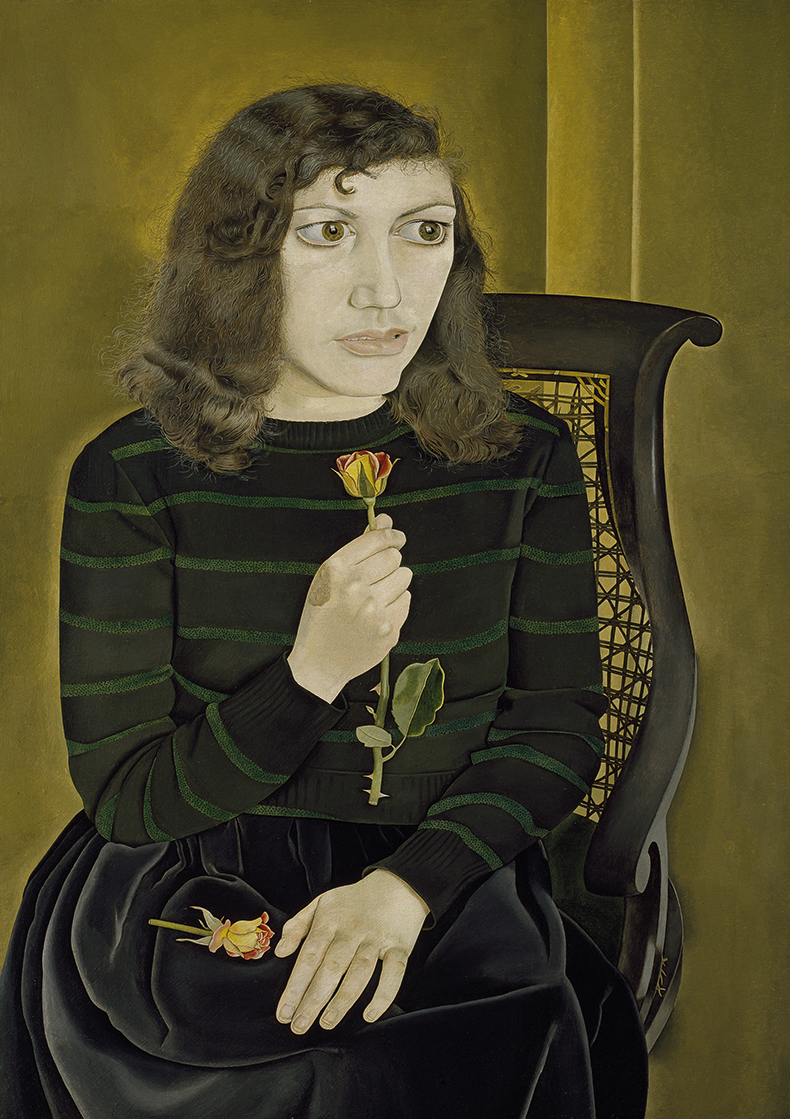
Girl with Roses (1947–48), Lucian Freud. British Council Collection. © The Lucian Freud Archive. All Rights Reserved 2022/Bridgeman Images
The great shift to his later ‘rough manner’ occurs around the end of the 1950s and is attributed to Freud switching to thicker hogshair brushes that meant his fastidious approach was replaced with something broader and more expressionistic. At first, in transitional portraits such as Head of a Girl (1962), this new style embodies itself in Munch-like swirls, bringing to mind kabuki make-up smeared at the end of a performance. The flatness dictated by photographic reproduction is gone; now the paint rises up in impasto layers of earth tones, ochres, browns and pinks, a restricted and unsentimental palette that appears to owe a great deal to that of Stanley Spencer. (Freud, as was his nature, denied the influence.) They are the colours of jaundice, of bruising, of sunburn, of pork luncheon meat, frequently juxtaposed on the same body. Later, Freud’s work becomes grittier – literally so, as he would mix sediment into the pigment to give it extra texture. This is at its most pronounced towards the end of his career, in his portrait of David Hockney from 2002 or the imperious, naked self-portrait Painter Working, Reflection (1993) – a painting at once combative and self-critical, a bathetic Achilles in the style of a late Rembrandt, where the flesh is so bobbled with particulates that it acquires the texture of corned beef. It is as if he had taken Cromwell’s famous dictum a stage further, adding in extra warts where there were none in reality.
With any portrait there is an unstated trade-off, whereby the sitters offer themselves up to be immortalised but on terms strictly controlled by the artist (taken to extremes in Picasso’s portrait of Gertrude Stein, in which he gave her the features of an Iberian mask – now become more familiar than her real face). Freud’s dispassionate observation of the human form, regarding it as no different in kind from a vase of buttercups or a kitchen sink, takes this Faustian pact to extremes. This is particularly noticeable in his minuscule portrait of the Queen (2000–01). The banknote curlicues of her hairdo and the crown that seems to hover above them mean that the subject is instantly identifiable, if not recognisable: the face, however, is that of a pugilist, puffy and with a hint of five o’clock shadow. As with his portrait of a pregnant Kate Moss (2002), her head resembling a deflated rugby ball, it feels as if Freud made a misstep in taking for his subject a woman whose features were so instantly familiar, so endlessly photographed, that the stubborn refusal to produce anything approaching a likeness is more marked than ever. By contrast, the performance artist Leigh Bowery, whose features were habitually mediated by layers of face paint, proved an ideal sitter: flopping about on a daybed in Schiele-like contortions, he was unrecognisable from his public persona, willing and ready to be rendered by Freud as a series of flesh-toned rockeries. His presence lent the artist’s work a Cool Britannia cachet without distracting the viewer with concerns about whether or not the representation was true to life.
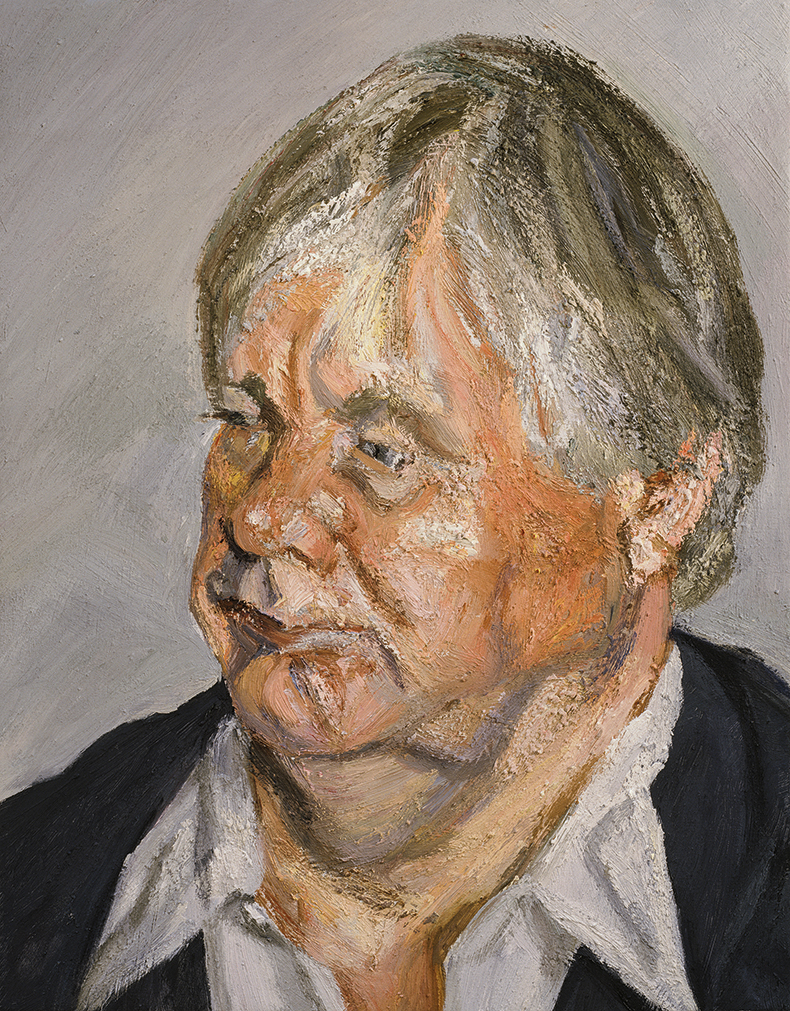
Profile Donegal Man (2008), Lucian Freud. Private collection. © The Lucian Freud Archive. All Rights Reserved 2022/Bridgeman Images
In a sense, such concerns are immaterial. Freud’s work recognises that expecting a portrait to reveal something of its sitter’s soul is an anachronistically Romantic notion. To a degree, the realism or otherwise of his portraits is a distraction; he might just as well have been producing abstracts in the manner of Rothko or Richter. What was paramount was the process, the physical application of paint to canvas, the accretion of layers and pigments across months, even years. Portraiture provided him with a mechanism to do this without being alone – an exercise in pure technique that took place while a reigning monarch (or bookie, supermodel or benefits supervisor) happened to be in the same room.
To stray into the territory of his grandfather, perhaps this fascination with the slow gestation of a work is reflected (unconsciously or otherwise) in Freud being regularly driven to paint pregnant women. For that matter, the male nudes with their dangling members could perhaps be a reminder that, for him, the act of creation was more vital and rewarding than the end product. But that is to come back to a biographical, even a genealogical interpretation. Perhaps, with Freud, it is inescapable.
‘Lucian Freud: New Perspectives’ is at the National Gallery, London, from 1 October–22 January 2023.
From the October 2022 issue of Apollo. Preview and subscribe here.
Unlimited access from just $16 every 3 months
Subscribe to get unlimited and exclusive access to the top art stories, interviews and exhibition reviews.

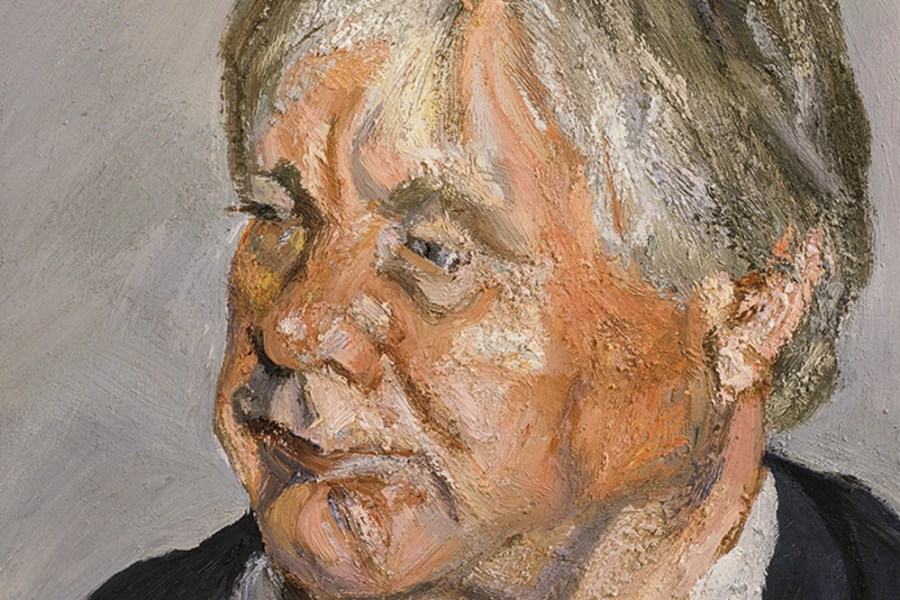
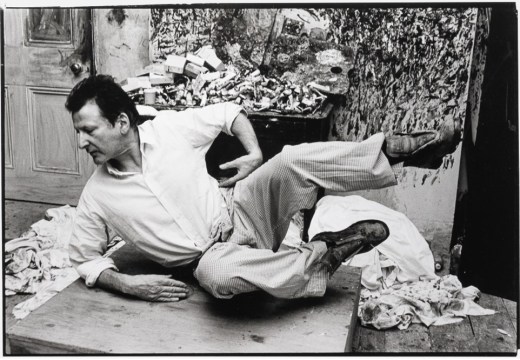
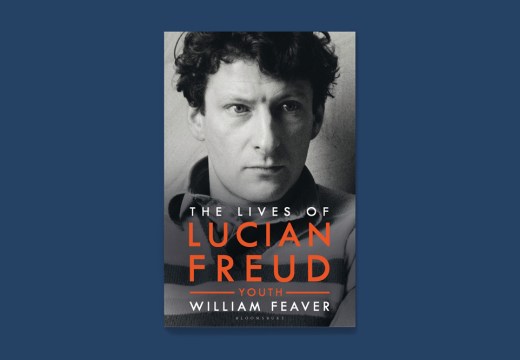
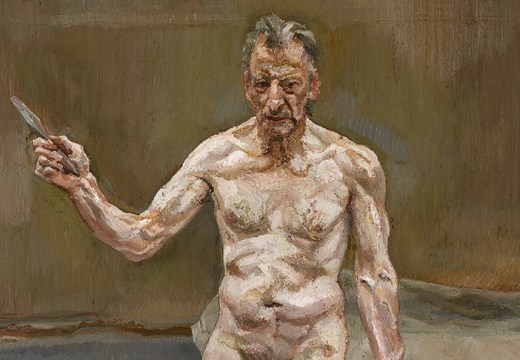









![Masterpiece [Re]discovery 2022. Photo: Ben Fisher Photography, courtesy of Masterpiece London](http://www.apollo-magazine.com/wp-content/uploads/2022/07/MPL2022_4263.jpg)
It’s time for the government of London to return to its rightful home